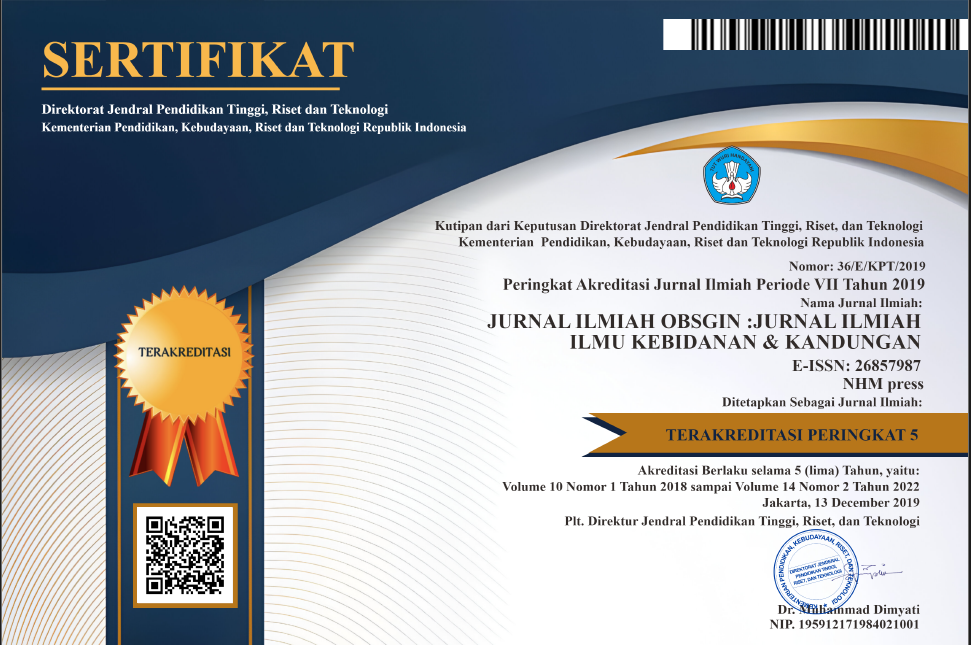HUBUNGAN PEMBERIAN ASI EKSKLUSIF DENGAN KEJADIAN STUNTING DI WILAYAH KERJA PUSTU KALIBOTO LOR PUSKESMAS JATIROTO KABUPATEN LUMAJANG
Abstract
Stunting is a linear growth disorder caused by repeated chronic malnutrition. A preliminary study at Pustu Kaliboto Lor, Jatiroto Health Center found that the latest data for August 2020 was that the prevalence of stunting under five was 28%. The purpose of this study was to analyze the correlation between exclusive breastfeeding and the incidence of stunting in toddlers in the Working Area of Pustu Kaliboto Lor, Jatiroto Public Health Center, Lumajang. This research method is an analytic survey research using a cross-sectional approach/design. The population is 56 people, with a sample using the Slovin formula obtained from 49 people, the sampling technique used is purposive sampling. Data collection using a questionnaire. Spearman rank correlation statistical test was carried out. The results of the study of 49 respondent infants who were categorized as Severe stunting with Non-ASI were mostly 5 toddlers (10.20%), the Moderate degree of stunting category with partial ASI were mostly 14 toddlers (28.57%), and the category of mild stunting who were given ASI was predominantly mostly as many as 15 (30.61%). Based on the results of the Spearmen rho statistical test, the significance value is ρ = 0.000 with a significant level of 0.01 (ρ <0.05). It can be concluded that these results indicate that there is a relationship between breastfeeding and the degree of stunting in infants in the Working Area of Pustu Kaliboto Lor, Jatiroto Health Center.To reduce the incidence of stunting, mothers and babies need to pay attention to exclusive breastfeeding and MP-ASI intake. Mothers also need to routinely bring their babies to the posyandu so that they can monitor the child's growth so that health workers can detect early if the baby is stunted.











